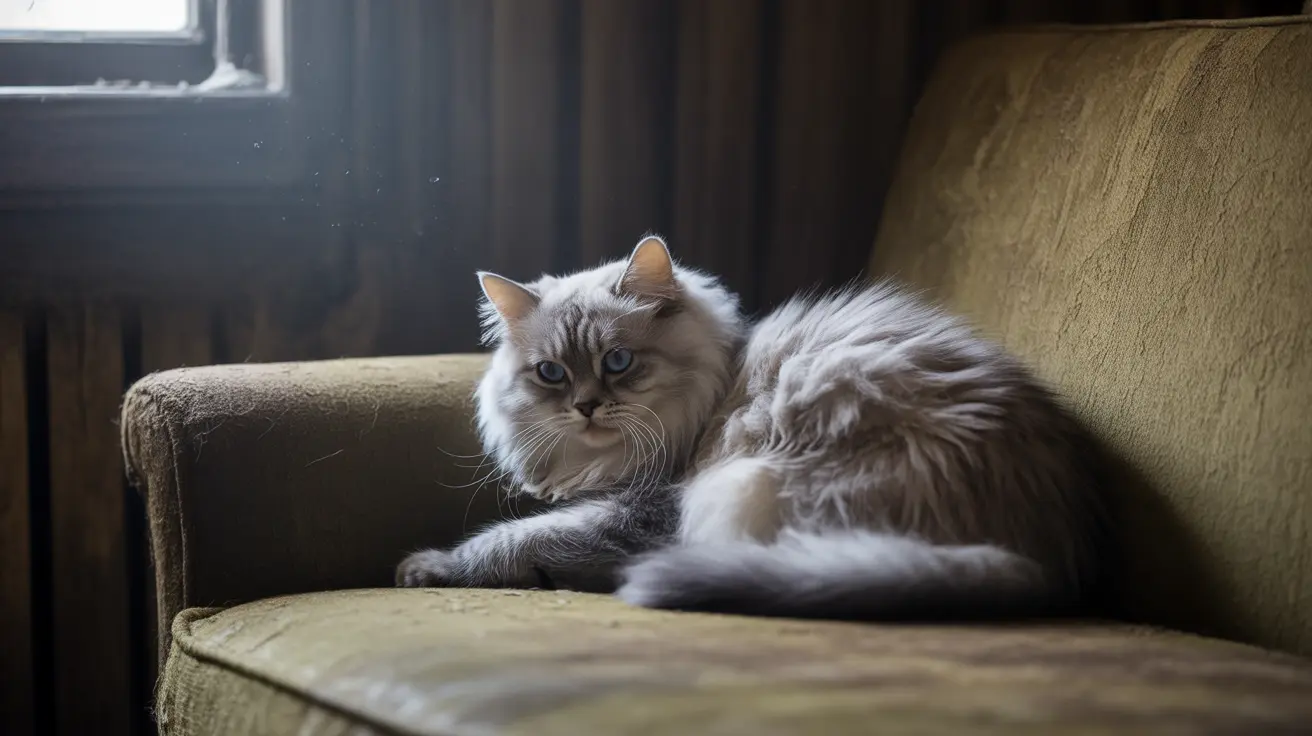Visual Indicators of an Underweight Cat
When examining pictures of underweight cats, several key features stand out:
- Visible ribcage with little to no fat covering
- Prominent spine with easily noticeable vertebrae
- Obvious hip bones and shoulder blades
- Extreme abdominal tuck
- Thin neck and face structure
- Poor coat quality, often appearing dull or unkempt
How to Perform a Physical Assessment
The Rib Check
Place your hands on either side of your cat's rib cage. In a healthy cat, you should feel the ribs with a slight fat covering. If the ribs feel like running your fingers across a washboard, your cat is likely underweight. Think of the difference between running your fingers across your knuckles (too thin) versus your palm (ideal).
The Spine Test
Run your hand along your cat's spine. While you should be able to feel the vertebrae, they shouldn't be sharply prominent. If the bones feel like they're covered by only a thin layer of skin, this indicates an underweight condition.
Common Causes of Weight Loss in Cats
Several factors can contribute to a cat becoming underweight:
- Dental problems making eating painful
- Gastrointestinal issues affecting nutrient absorption
- Chronic diseases such as kidney disease or hyperthyroidism
- Stress or anxiety
- Competition for food in multi-cat households
- Insufficient caloric intake
When to Seek Veterinary Care
If you notice any of these signs, especially in combination with behavioral changes or decreased appetite, schedule a veterinary appointment immediately. Rapid weight loss can lead to serious complications, including hepatic lipidosis, a potentially fatal condition in cats.
Frequently Asked Questions
How can I tell if my cat is underweight by feeling their ribs and spine?
Run your hands along your cat's sides - you should be able to feel the ribs but they shouldn't be prominently visible or sharp to the touch. The spine should be palpable but not jutting out, with some muscle coverage on either side.
What are the visual signs and behavior changes that indicate my cat is too skinny?
Look for visible ribs, spine, and hip bones, along with changes in behavior such as lethargy, increased vocalization, or changes in appetite. A dull coat and extreme abdominal tuck are also warning signs.
What medical conditions commonly cause a cat to lose weight and appear underweight?
Common medical causes include dental disease, hyperthyroidism, diabetes, kidney disease, gastrointestinal problems, and parasites. Any sudden weight loss should be evaluated by a veterinarian.
How can I safely help my underweight cat gain weight and improve their coat condition?
Work with your veterinarian to identify and treat any underlying conditions. They may recommend a high-calorie diet, multiple small meals throughout the day, and supplements to support healthy weight gain and coat improvement.
When should I take my underweight cat to the vet for urgent care?
Seek immediate veterinary care if your cat stops eating for more than 24 hours, shows rapid weight loss, appears lethargic, or exhibits other concerning symptoms like vomiting or diarrhea. Early intervention is crucial for preventing serious complications.






